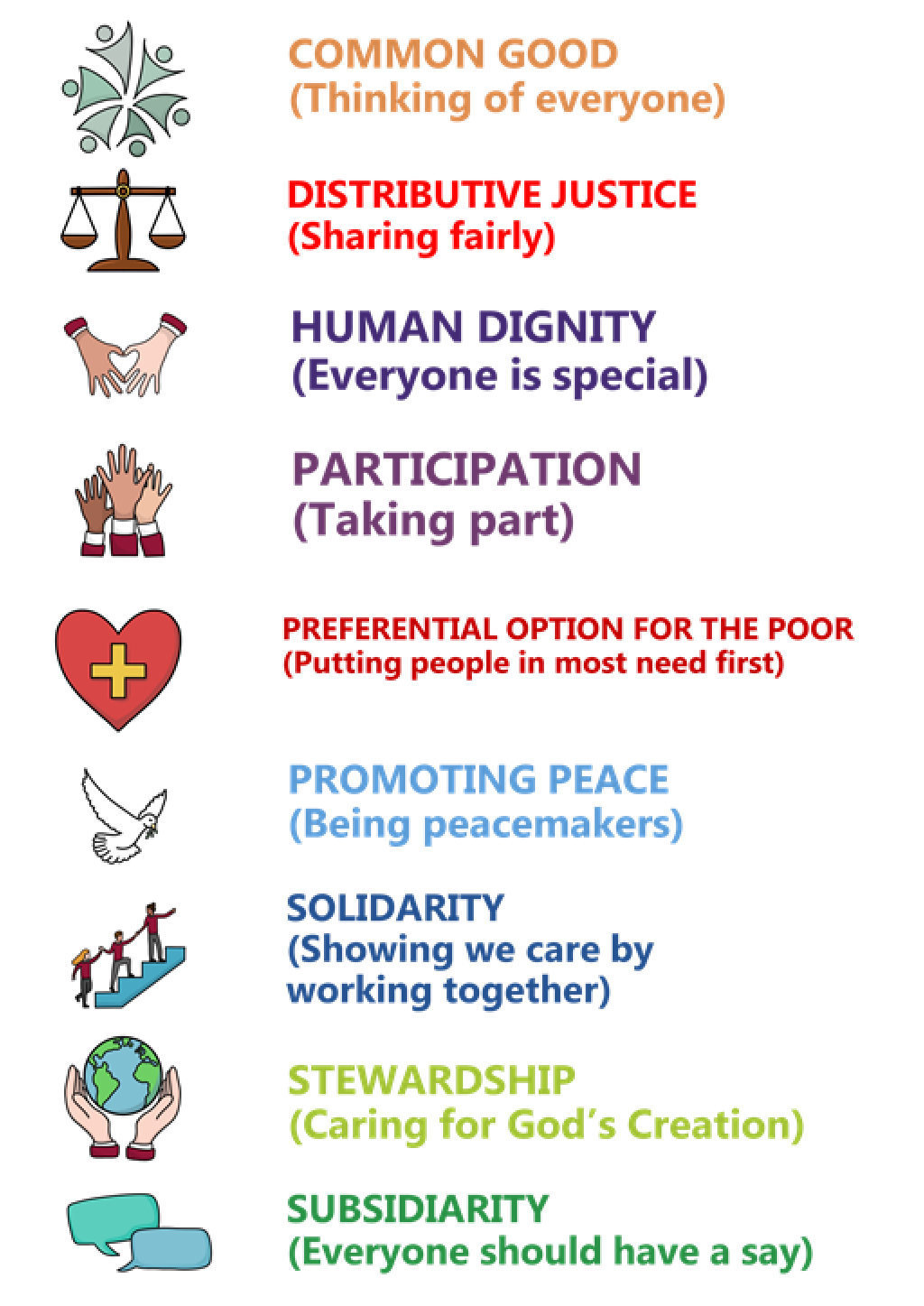Catholic Social Teaching

Catholic social teaching (CST) is rooted in Scripture, formed by the wisdom of Church leaders, and influenced by grassroots movements. It is our moral compass, guiding us on how to live out our faith in the world.
It is based around the Church’s belief that we can all make a difference in making our world a better place for all. These teachings are rooted in Scripture and especially in the teachings of Jesus found in the Gospels. Christ shows us how to walk in his footsteps, bringing love and care to those both near and far. It is our vocation to live as Jesus and saints throughout the ages, bettering our world for everyone.
These teachings form an integral part of our curriculum and they are displayed as the below graphics around the school.

Where does Catholic Social Teaching come from?
The first source of CST is the Bible. Consider the Ten Commandments (the old law) and Christ’s perfection of the old law when he calls us to love God with all our heart, soul and mind, and our neighbour as we love ourselves.
The second source is the Fathers and Doctors of the Church. The Fathers, such as St Augustine, took the teachings of the Apostles and explained and defended them in the years following Christ’s death and resurrection.
The Doctors of the Church are teachers who have made important contributions to the faith through the years. For example, St Thomas Aquinas, St Catherine of Siena, and St Anthony are doctors of the Church.
The third source is the evangelical letters and speeches of the Popes, and the Magisterium of the Church. The first encyclical to tackle social issues was Rerum Novarum by Pope Leo XIII in 1892. In it the pope outlined a just social order in response to a lack of basic employee rights and an increasing tendency towards class warfare.
All of the relevant teaching can now be found in the Compendium of the Social Doctrine of the Church. There is also a condensed version aimed at young people called DoCat. The content of these pages is taken mainly from both of these sources.
